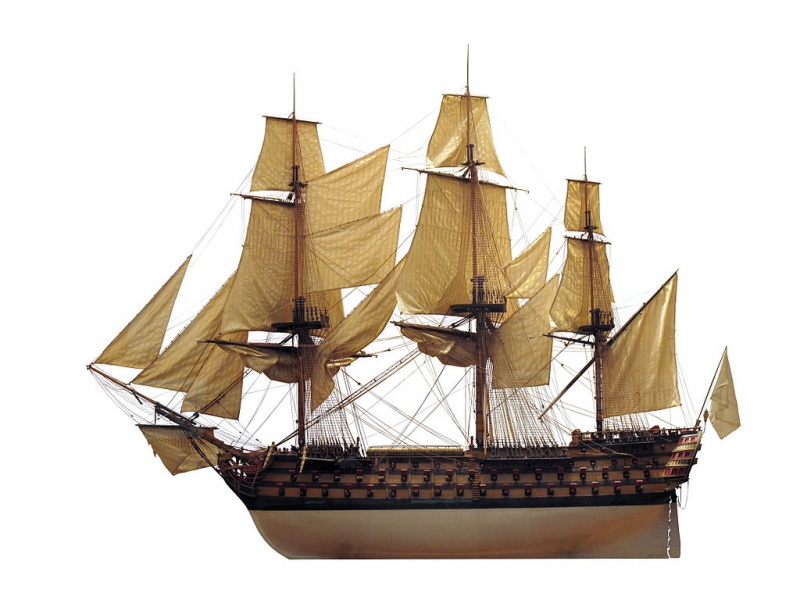Commerce de Marseille (1788)

1⁄48th scale model on display at Marseille maritime museum
Commerce de Marseille was a 118-gun ship of the line of the French Navy, lead ship of the Océan class. She was funded by a don des vaisseaux donation from the chamber of commerce of Marseille.
History
France
Name:
Commerce de Marseille
Namesake:
Marseille
Ordered:
1786
Builder:
Arsenal de Toulon
Laid down:
April 1787
Launched:
7 August 1788
Completed:
October 1790
Out of service:
2 August 1850
Struck:
1802
Captured:
Seized as prize by Great Britain on 29 August 1793
Fate:
Broken up in 1856
United Kingdom
Name:
HMS Commerce de Marseille
Out of service:
Broken up in 1856
General characteristics
Class and type:
Océan-classship of the line
Displacement:
5,098 tonnes
Tons burthen:
2,746 tonnes
Length:
65.18 m (213 ft 10 in) (196.6 French feet)
Beam:
16.24 m (53 ft 3 in) (50 French feet)
Draught:
8.12 m (26 ft 8 in) (25 French feet)
Propulsion:
sail, 3,265 m2 (35,140 sq ft)
Complement:
1,079
Armament:
- Lower deck:
- lower deck: 32 × 36-pounder guns
- middle deck: 34 × 24-pounder guns
- upper deck: 34 × 12-pounder guns
- Fc: 18 × 8-pounder guns + 6 × 36-pounder carronades
Notes:
Length of gun deck was 208 ft 4 in (63.50 m), the longest of any 3-decker ever built.
She was 2,746 tonnes burthen, also a record.
Career.
Built on state-of-the-art plans by Sané, she was dubbed the "finest ship of the century". Her construction was difficult because of a lack of wood, and soon after her completion, she was disarmed, in March 1791.
Commerce de Marseille at Toulon in 1788
Commerce de Marseille came under British control during the Siege of Toulon. When the city fell to the French, she evacuated the harbour for Portsmouth. She was briefly used as a stores ship, but on a journey to the Caribbean Sea, in 1795, she was badly damaged in a storm and had to limp back to Portsmouth. She remained there as a hulk until she was broken up in 1856.








Bookmarks